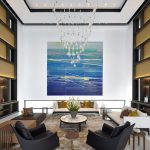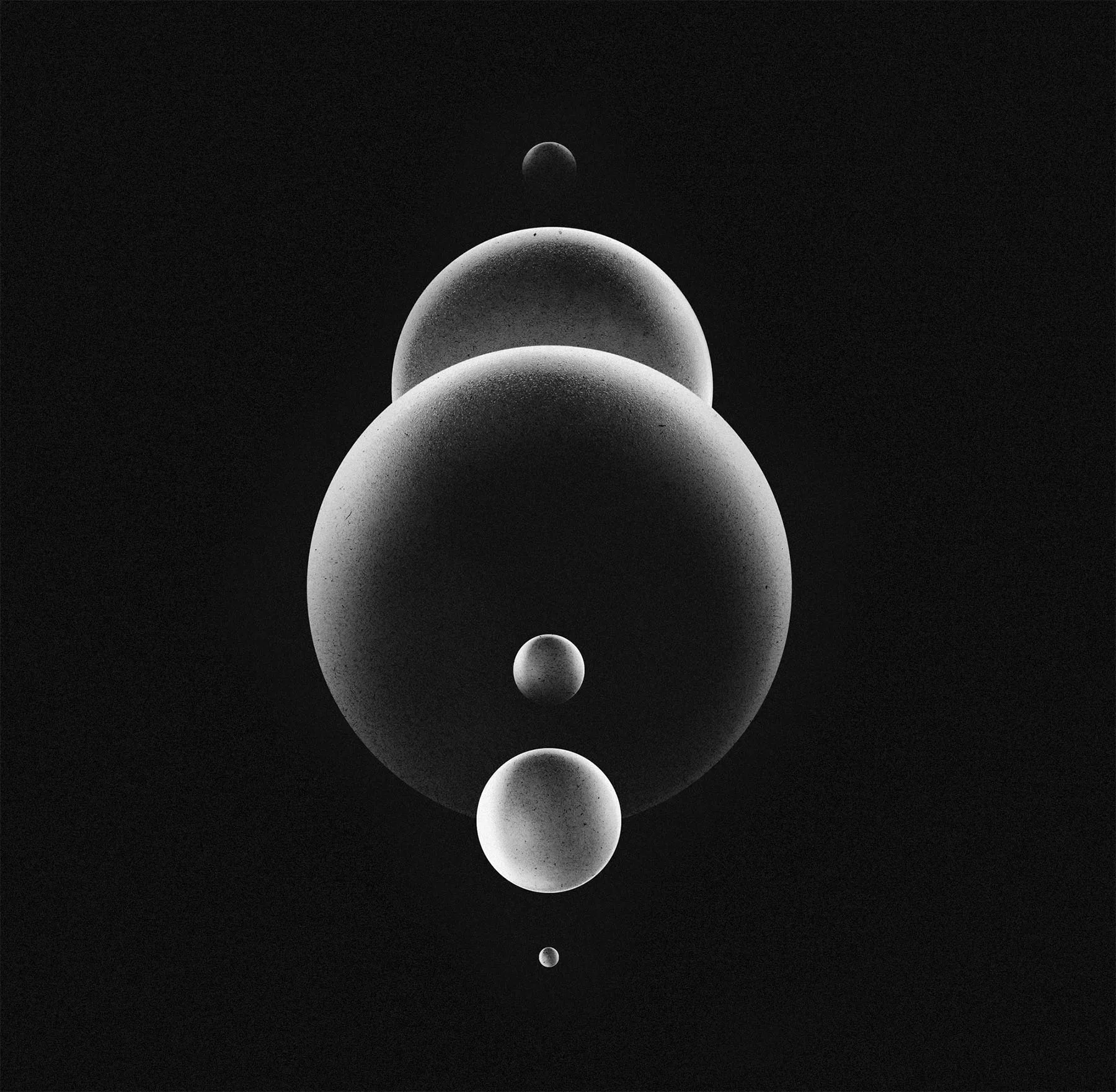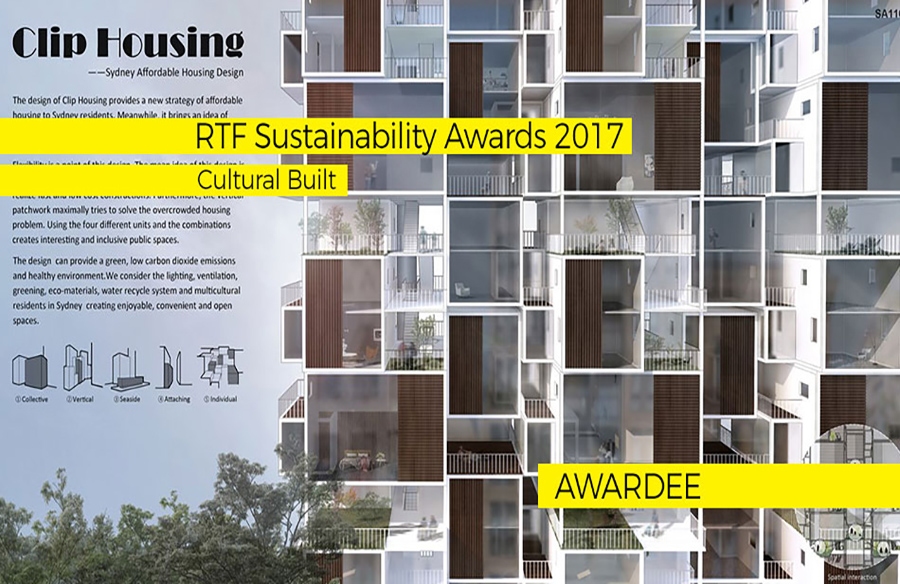The ancient Indian doctrine of Vastu shastra which consists of traditional views on how the laws of nature affect human dwellings, played an integral part in the planning and spatial organization of this otherwise highly modern house in India. The Vastu doctrine for homes is based on directional alignments organized around the principle of the Mandala with its nine square modules. The conceptual framework organizing this house is an interpretation of the Mandala that is here not only applied to the plan, but also extruded upward over the three stories of the home to form a three dimensional extrapolation of Vastu. Some of these modules are carved out as voids to create the openings and suggest the spatial relationships within.
First Award | RTFA 2014 Awards
Category: Residential Built
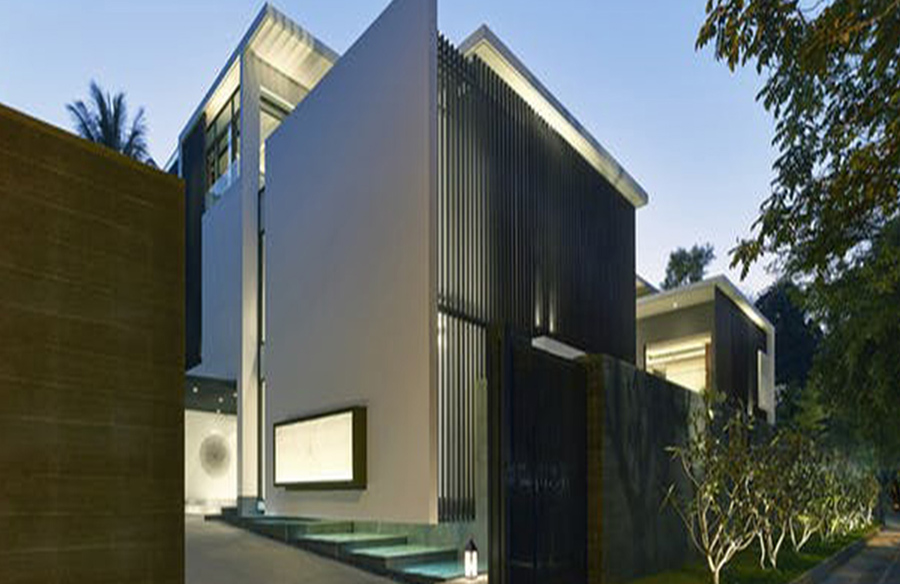
| Project Details | |
| Participant Name: | Saori Fukui-Chen |
| Country: | Singapore |
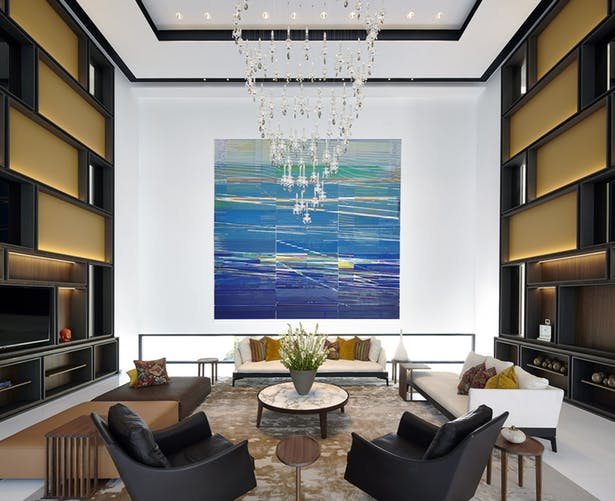
©WOW Architects & Warner Wong Design
One such relationship is the highly public first storey that completely opens to a central garden courtyard. The dining room at ground level is a long communal space where the room itself forms a massive frame to the external views of the courtyard with its contemporary landscape design and open shared lawn area. Culturally, this open aspect of the design relates to the Indian community way of life where the extended family is supported and included in much of their rituals and daily life. The ground floor is conceived as being for the community and speaks of the ceremony that surrounds Indian culture. Hovering above this living space is the more enclosed family lounge that steps out to a verandah which is suited to slightly more private conversation. As with most of the 2nd storey, this zone is meant for the exclusive use of the immediate family.
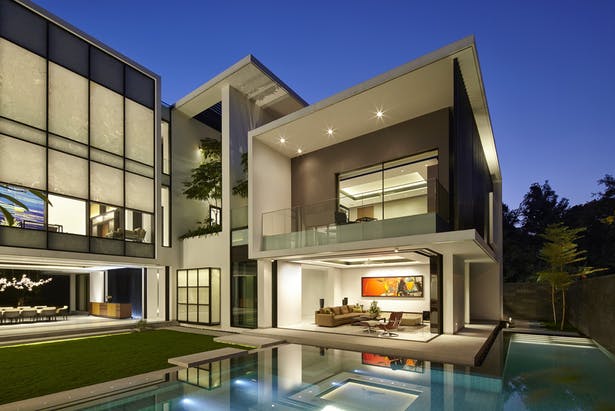
©WOW Architects & Warner Wong Design
The materiality of the spaces is an important aspect of the design, and the client actively participated in the hand selection of all the woods, stones, and metals used throughout the house. The purity and the simplicity of the spaces are enriched by the very fine sense of material presence in every surface and detail. This refined sensibility is also conveyed by the high degree of craftsmanship and customization carried through in the furnishing and millwork in the house, as well as the external façade, metal screens and cladding; all of which was specially customized in Europe and shipped to India for this house.
The internal architectural elements such as the sculptural spiral staircase with its exotic wood railings and the dark recesses of the coved ceilings are crafted as art pieces that are featured against the ever-white background. These customized architectural elements are treated as individual objects that fit into the whole designed experience, and in a similar manner to the superb selection of modern and colourful artwork on the walls.
- ©WOW Architects & Warner Wong Design
- ©WOW Architects & Warner Wong Design

